Today’s top saxophones have come from an interesting history. The inventor, Adolphe Sax, grew up as the son of Belgium’s chief instrument maker. Before he graduated from high school, Sax had already made an ivory clarinet and two flutes. He then moved on to reinventing the modern trumpet. And that’s how the saxophone came to be.
Sax referred to it as the bass horn when he was just 27 years old. Learning of the invention, the leading French paper, The Journal des Debats, dubbed Adolphe’s invention the saxophone. Sax created two saxophones, but the smaller one was a commercial flop. The French military band used the larger one to turn their whole program around.
What instrument family is saxophone?
Is Sax a horn or woodwind? Many mistake the saxophone for a brass instrument (the metal parts of a saxophone are indeed made of brass). However, a sax generates sound with a single reed, and so it is classified as a woodwind. As it produces sound by splitting an exhaled airstream on a reed, it is a woodwind. Instruments are not classified based on what they are made of, but instead, classification is based on how sounds are produced using them.
The instrument was so popular that militaries from around the world quickly came looking for the maker of the best alto saxophone ever.
The rest, as they say, is history, as musicians still love the instrument.

Credit: Trevor James
Top Pick: TJ Signature Custom RAW Alto Saxophone
Designed to reduce key noise and bouncing with felt and cork in all the right places, this sax also has the proper point screws for more action, a level draw tone hole, and a cup and touchpiece for smooth transitioning.
Why Trust This List of the Top Saxophones
In addition to combing through many websites, Mark Overton, who spent over 20 years buying saxophones on an international basis, was also extremely helpful. We also talked to numerous band directors, including Mike Brady, who held the most consecutive number one ratings in the University Interscholastic League (UIL) competition in Texas.
I am musician myself and have raised two girls through the high school band program under Mike Brady.
Understanding the Different Types of Saxophones
There are several different types of saxophones. Most students will begin with the alto saxophone because its compact fingering makes it easier for smaller hands to master. They tune the alto saxophone instrument to E flat. Most skills you master on an alto saxophone are easily transferable to the other types, too.
Fortunately, even the best alto saxophones are affordable in price than the other alternatives. This makes them an outstanding choice for people who are interested in seeing if they like playing the saxophone. Here are the other types of saxophones:
- Tenor Saxophone: Jazz musicians have made the tenor saxophone a popular choice. They tune this instrument to B flat. It is vital to consider the quality of materials when shopping for a tenor saxophone, though. This is because its unique curved shape makes it susceptible to damage, especially by new players. But first, most musicians must master a larger fingering area when choosing this instrument.
- Bass Saxophone: This is one of the rarest types of saxophones that musicians almost always play in a seated position. Like the tenor saxophone, they turn it to B flat, but a full octave lower. They are mainly for classical music.
- Baritone Saxophone: Baritone saxophones are popular among players who love rock and roll, along with rhythm and blues. They tune these instruments to B flat. However, it is important to look for one with a sturdy floor peg to protect the instrument.
- Soprano Saxophone: Experienced players produce a full rich sound on a soprano saxophone. But it is one of the most difficult instruments for inexperienced players because of its higher pitch. They tune it to an E-flat, just slightly higher than the alto saxophone.
Why Body Construction Matters in the Top Saxophones
The major difference in the saxophone’s body is whether it is ribbed or non-ribbed. This refers to how the keys fit onto the instrument. With non-ribbed construction, the manufacturer solders each key to the instrument’s body. In ribbed construction, they solder several keys to a plate and then attach it to the body. Ribbed instruments are slightly heavier than non-ribbed instruments.
Almost all student-level saxophones have post-to-body construction. This is because the added weight gives a warmer tone to the instrument. Professional models may have either. So, the buyer needs to consider all design factors because if the instrument is too heavy, it may produce a dark tone.
The Top Saxophones and Geometry
Not all saxophones within a basic type have the same design. Different saxophones have different bore sizes. And the bore size is the width of the neck where the mouthpiece goes. Also, the smaller the bore, the brighter the instrument’s sound.
Large bore saxophones usually produce a warmer sound. Neither one is particularly better because it depends on the type of music you play. For new players, a big bore saxophone is usually easier to play.
Common Saxophone Materials
Most saxophones consist of brass with a coating on top, which provides different looks. You can also find a few saxophones of red brass or a bronze alloy. But they produce a darker sound. Instruments consisting of 95 percent silver or sterling silver have a sweeter sound and less of an edge. Also, those nickel-silver saxophones produce higher harmonics.
A Closer Look at Lacquers
Many musicians say that the lacquer they apply to the top of the instrument has no impact on its sound. However, others will argue that it has a small impact. Instruments without lacquer require special care, to avoid verdigris. It is a sort of brass mold that can develop red rot in extreme cases.
But some musicians claim a lacquered instrument has a warmer sound than a plated instrument. Gold or silver-plated instruments produce a brighter sound while nickel plated instruments produce a more harmonic sound.
Our Recommendations for the Top Saxophones
Saxophones come in many different levels. And you’ll find least one choice from each level in this list of the top saxophones. That way, you can choose the best instrument for your specific needs. So keep reading to explore these top alto saxophones.
Top Pick: TJ Signature Custom RAW Alto Saxophone

Credit: Trevor James
This alto sax was introduced to the market in 2015. TJ makes two models of this saxophone. The only difference is that the lacquer is missing from the XS version. One of the biggest factors in making this our top choice is the meaty corkwork that reduces the key noise and bouncing. Also, they used felt in many areas where key noise would normally be a problem.
The second reason this instrument is one of the top saxophones is the proper point screws. Unlike many manufacturers who use parallel screws or pseudo points, these allow the player to produce more action easily. The main stacks have regulation adjustors, making tweaking this instrument at home easy. Under each buffer is a thick piece of sturdy cork to reduce key noise and bouncing. And the drawn tone holes on this model are extremely level.
This sax features a removable bell measuring 4 7/8 inches across, allowing players to produce unusual sounds easily. The sling ring has much more meat than on many comparable models. Also, the double arms on the lower stack keys ensure the F and D cups don’t twist off.
Transitioning from the B to the B flat is easy because of the slightly domed B key cup. And transitioning from C sharp to B on the lower octave range is also simple because of the beveled low B touchpiece. Although the pearls are not real, they are of great quality. Most of the posts are ribbed. Also, the few stand-alone posts feature generous bases, eliminating the need for repairs.
The metal thumb ring fits larger hands, as well. The middle-of-the-road sound is excellent for most players who play a variety of music. Lastly, those who play a particular style will find this instrument easy to adjust.
P. Mauriat Greg Osby Signature Alto Saxophone

Credit: Musician’s Friend
P. Mauriat’s Greg Osby Signature Alto Saxophone looks attractive while producing excellent action. New players will adore how easily this alto sax responds from a dynamic standpoint. The manufacturer has succeeded in producing a vintage-looking horn with modern consistent intonation. While many modern saxophones have keys that are too high, the keys on this saxophone sit just right.
Some players find the action is a little tight for their personal preferences. But remember, it will loosen up over time. Also, the professional pads and gold-plated resonators reduce key noise and bouncing. The silver bell and bow, and cognac lacquered body give this sax a vintage look. This sax has a nickel-silver neck, engraving with a dragon-shaped bell only add to its attractiveness.
They engraved most of the keys to keep your fingers in place and make it easier to play. The key touches on this saxophone are abalone. Also, the keys line up perfectly. This means players don’t need to over-stretch when making rapid transitions from one key to the next. This instrument is similar to the Selmer Balanced Action Alto Saxophone, which is no longer in production.
Yanagisawa WO20 Alto Saxophone

Credit: Musician’s Friend
The Yanagisawa WO20 allows players to produce a variety of different tones. This instrument has an adjustable F key, so you can produce altissimo harmonies. This is the only alto saxophone to have a C sharp and B table key slider mechanism that make it easier to move between these two notes.
The pointed pivot screws ensure that the hinge rods are an exact fit. Metal tone boosters improve clarity throughout the instrument’s dynamic range. This instrument would place higher on this list of the top saxophones if it had adjustors on the main stack keys. And finally, the pads could be more airtight to make sure the tone sounds clear.
Yamaha YAS875-EX Alto Saxophone

Credit: Yamaha Corporation
Musicians have loved the Yamaha YAS875-EX since they introduced it in 2005. This instrument produces outstanding tones with clarity when you play fortissimo. Also, it remains full throughout its dynamic range. The G1 crook helps this instrument produce outstanding harmonics in the upper range.
This instrument is quite responsive, so you can easily play the quickest pieces of music. The burgundy felt pads offset the looks of this silver instrument while eliminating noise from the keys. This instrument would be the top saxophone on this list if it didn’t have a ball and socket arrangement on the B flat /C trill keys. Unfortunately, this arrangement will eventually wear out, leading to costly repairs.
Windcraft WAS-110 Alto Saxophone

Credit: Dawkes Music Ltd
While not one of the top saxophones, beginner players and parents should consider the Windcraft WAS-110 Alto Saxophone. The reason is that it is an outstanding beginner’s instrument with a price tag to match. The body features pillars they have fitted to the straps. This means if the player knocks it around a little, the instrument will last.
This instrument features many great assets you’d normally find in much more expensive instruments. They include a removable bell and an arched bell key compound pillar. Also, you get an adequate sling ring and an adjustable thumb rest. This instrument also has adjustable height adjustors for the main stacks. While the keys are hard plastic, they placed them correctly.
Windcraft soldered the screw pins firmly in place, so you can easily adjust them. The pivotal screws are some of the longest on any alto sax. They make sure the pivot happens around the screw and not the hole, so they should last a long time. Lastly, this instrument is not higher on this list of top saxophones because it delivers slightly creamy sounds in the upper octave range.
Buffet 400 Alto Saxophone

Credit: Saxquest
The Buffet 400 Alto Saxophone has a tailored look with engraving on its body tube and crook. It features fully ribbed construction, too. Also, the bell is secured with a sturdy two-piece clamp. Unfortunately, some of the tone pads are not level, particularly at the lower levels. However, the foam pads on this instrument are good.
The first Buffet 400 alto saxophones had lacquer problems, leading to brown and red spots on the instrument. Players who like to roll their fingers will like the tear-shaped top F touchpad. The B flat key is large, making it easy to roll from the B flat to the C. They drilled the key barrels well, so there is a lack of free play in the keys.
The tone of this instrument is in the dark camp. Also, players must work to get air to move through it. This instrument produces great sound control in the mid-range, too. However, once pushed to either extreme, it lacks some clarity. The final reason this instrument is not one of the top saxophones is that the top C growls a little when you play it loudly.
Cannonball Gerald Albright Alto Saxophone

Credit: Cannonball Musical Instruments
If you are looking for a great alto saxophone, consider the Gerald Albright Alto Saxophone. The reason is because they have paid a lot of attention to the little details. This saxophone has well-balanced springs and free-standing pillars with substantial bases. Also, it has a generously-sized thumb rest. This sax features a triple-annealed bell that allows you to produce a better sound.
The bell key guards have substantial feet, so they perform flawlessly. Every fitting on this Taiwan-manufactured instrument is quality. They carefully thought out the keywork so you can play comfortably all night long. There is even a helper spring on the G sharp key.
They made the pads of leather, so they should last awhile. They used stone for the key pearls, which can get slippery when wet. What makes this lower on this list of top saxophones is that the key adjustors are off-center. This means they are more likely to rip off. While it may not be the smoothest alto sax you will ever play; this horn is responsive.
These are the top saxophones you can find today. Have you picked your favorite from this musical instrument showdown? Consider all your needs and the type of music you play, and you should find the perfect saxophone for you.
Sources
Band Director Speaks [Telephone interview]. (2016, November 14).
Further Definitions. (2010, July 11). Saxophone Review: Buffet 400 Alto Sax. Retrieved November 15, 2016, from http://felixssaxophonecorner.blogspot.com/2010/07/saxophone-review-buffet-400-alto-sax.html
H. (2015, August 17). Top 7 Best Alto Saxophones. Retrieved November 15, 2016, from http://windplays.com/7-best-alto-saxophones/
Howard, S. (2014, April). Buffet 400 Alto Saxophone Reviews. Retrieved November 15, 2016, from http://www.shwoodwind.co.uk/Reviews/Saxes/Alto/buffet_400_alto.htm
Howard, S. (2011, July). Cannonball ‘Vintage Reborn’ TVR-SD/BR Tenor – Vintage AV/PC-L Alto – Stone Series GA5-B Alto. Retrieved November 15, 2016, from http://www.shwoodwind.co.uk/Reviews/Saxes/Tenor/cannonball_trio.htm
Howard, S. (2106, May). TJ SR Alto Saxophone. Retrieved November 14, 2016, from http://www.shwoodwind.co.uk/Reviews/Saxes/Alto/tj_sr_alto.htm
Howard, S. (2012, June). Windcraft WAS-110 Alto Saxophone. Retrieved November 15, 2016, from http://www.shwoodwind.co.uk/Reviews/Saxes/Alto/windcraft_alto.htm
Howard, S. (2006, April). Yamaha YAS875-EX Custom alto saxophone. Retrieved November 15, 2016, from http://www.shwoodwind.co.uk/Reviews/Saxes/Alto/Yamaha_YAS875EX.htm
Howard, S. (2013, November 05). Yanagisawa A-WO2 Alto Saxophone. Retrieved November 14, 2016, from http://www.shwoodwind.co.uk/Reviews/Saxes/Alto/yanagisawa_aw02.htm
Overton, M., & DuMars, J. (2012). Saxophone Buyer’s Guide. Retrieved November 14, 2016, from http://www.saxophone.org/resources/guide
Sollitto, Z. (n.d.). Putting P. Mauriat’s New Greg Osby Signature Alto to the Test. Retrieved November 14, 2016, from http://www.bestsaxophonewebsiteever.com/putting-p-mauriats-new-greg-osby-signature-alto-to-the-test/
Band Director Speaks [Telephone interview]. (2016, November 14).
Yanagisawa Alto Saxophone WO Series – Elite Model Bronze – Clear-Lacquer Finish. (n.d.). Retrieved November 14, 2016, from https://www.long-mcquade.com/43033/Band/Saxophones/Yanagisawa/Alto_Saxophone_WO_Series_-_Elite_Model_Bronze_-_Clear-Lacquer_Finish.htm

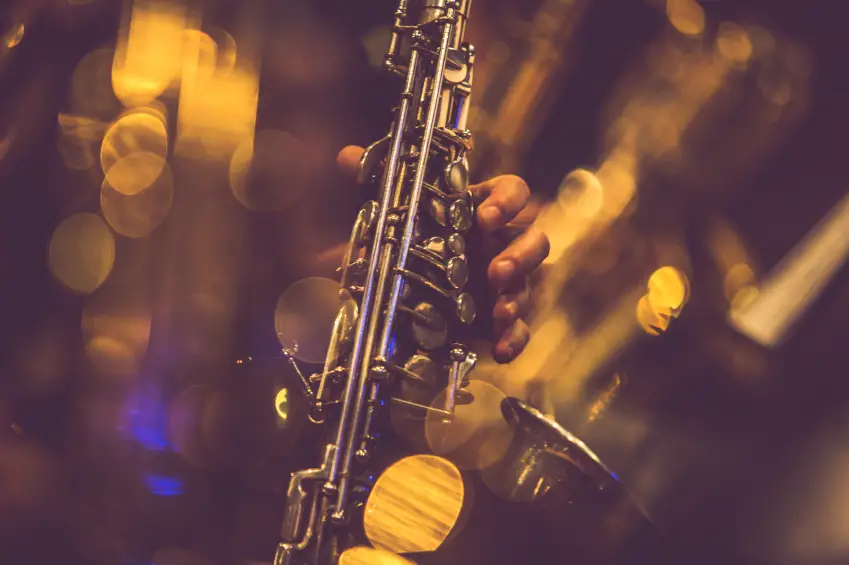
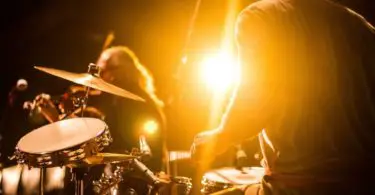
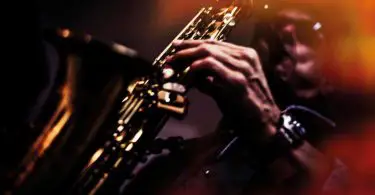

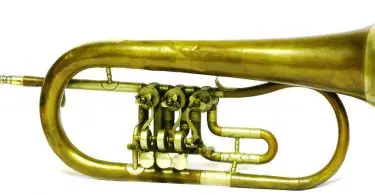
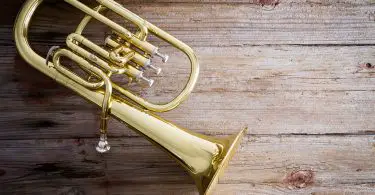
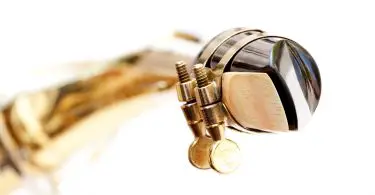
I think these are all great Sax’s to recommend, except for one main issue my friend has with their Yamaha YAS875EX.
On the right hand key stack the springs seem shorter and arranged a bit differently than other Sax’s we’re used to. This has impacted the snap back in a less than ideal way, in our opinion. Still a great instrument - but I definitely wonder at the change and why the makers decided on it!
Something to keep in mind if anyone’s considering the YAS875EX, give it play though and see how it feels to you.
With the basic errors in the beginning of this article I cannot imagine anyone trusting the actual list. The baritone saxophone is an Eb instrument an octave lower than an alto and not Bb. Additionally, the soprano saxophone is a Bb instrument an octave higher than a tenor and not an Eb. A bit of basic research would have been useful and simple.